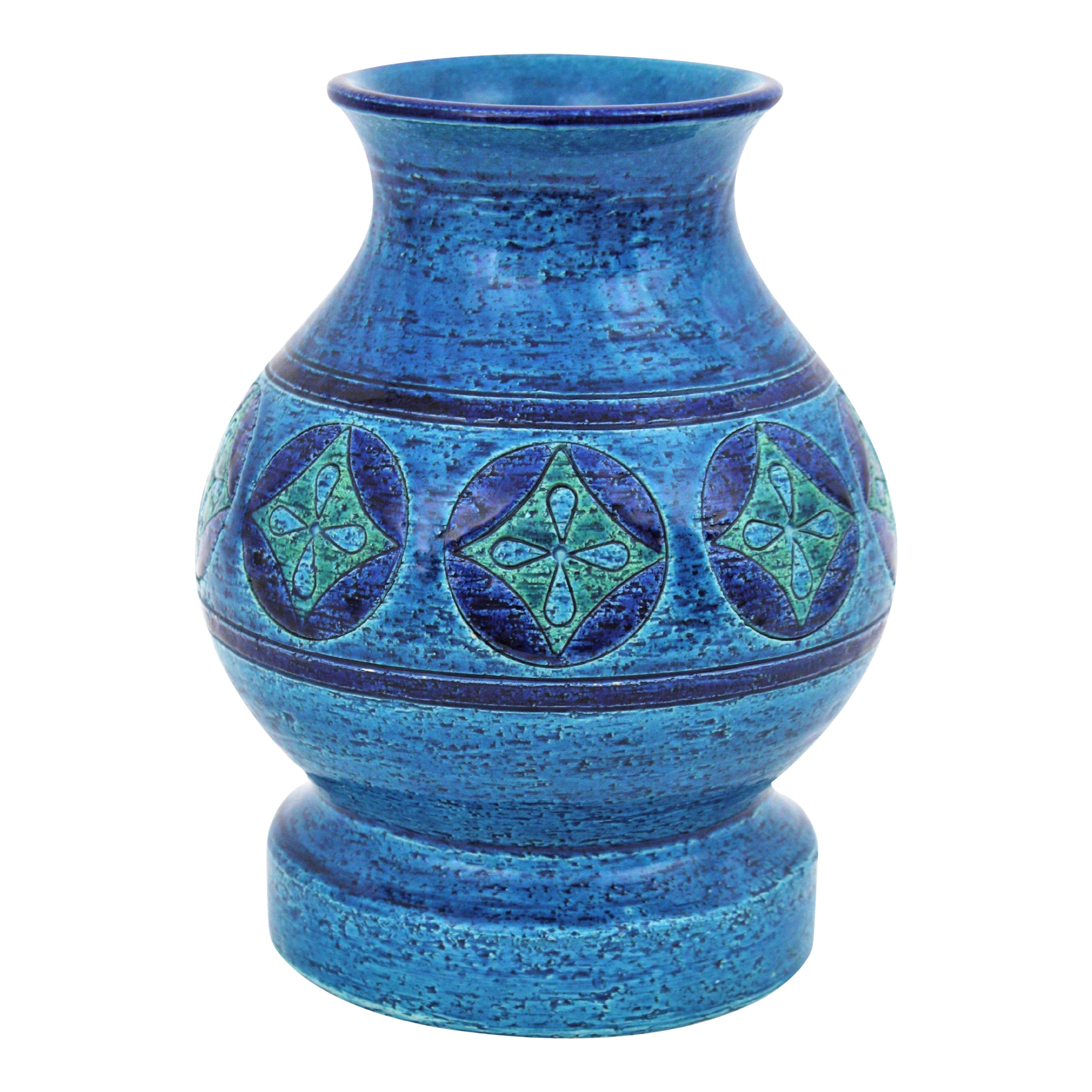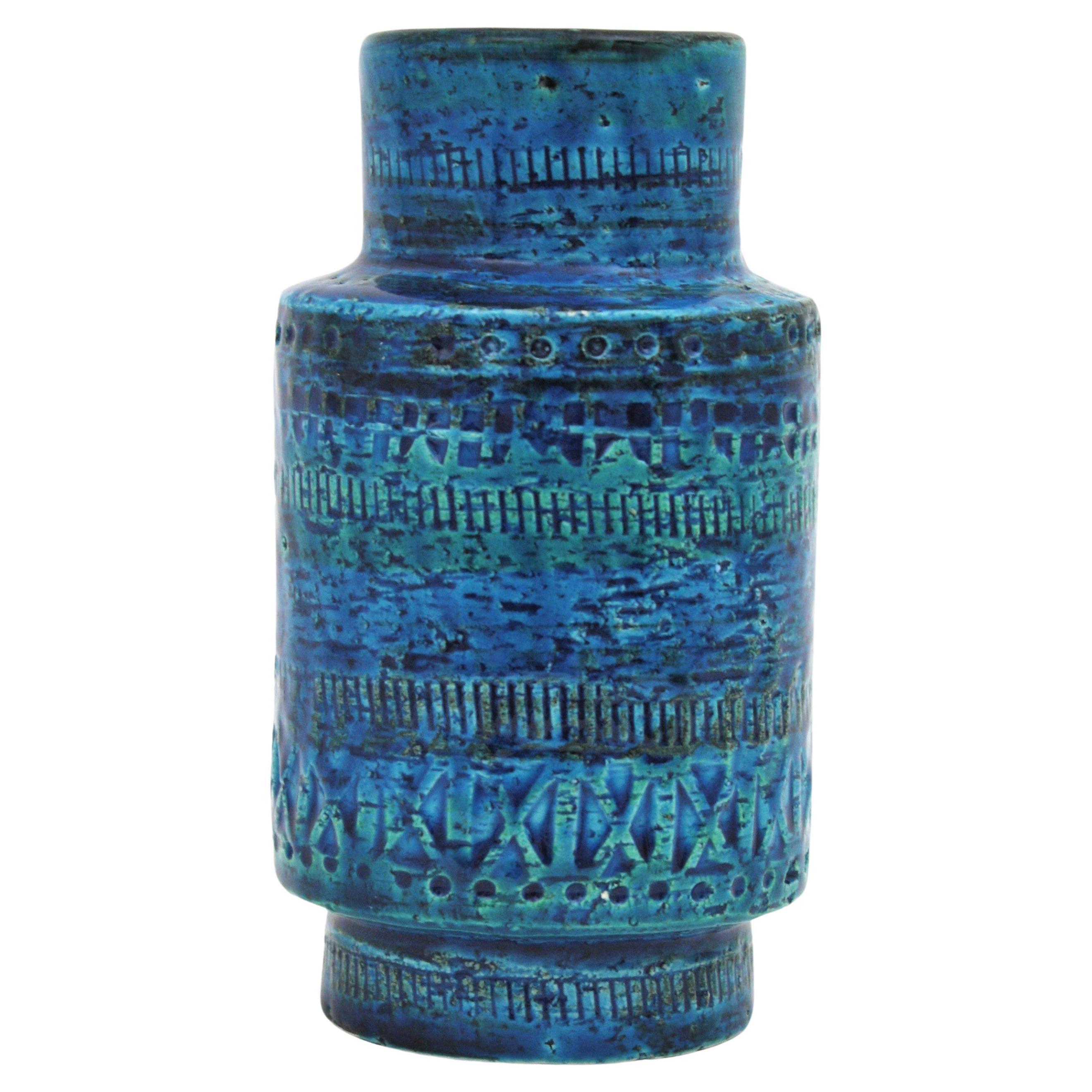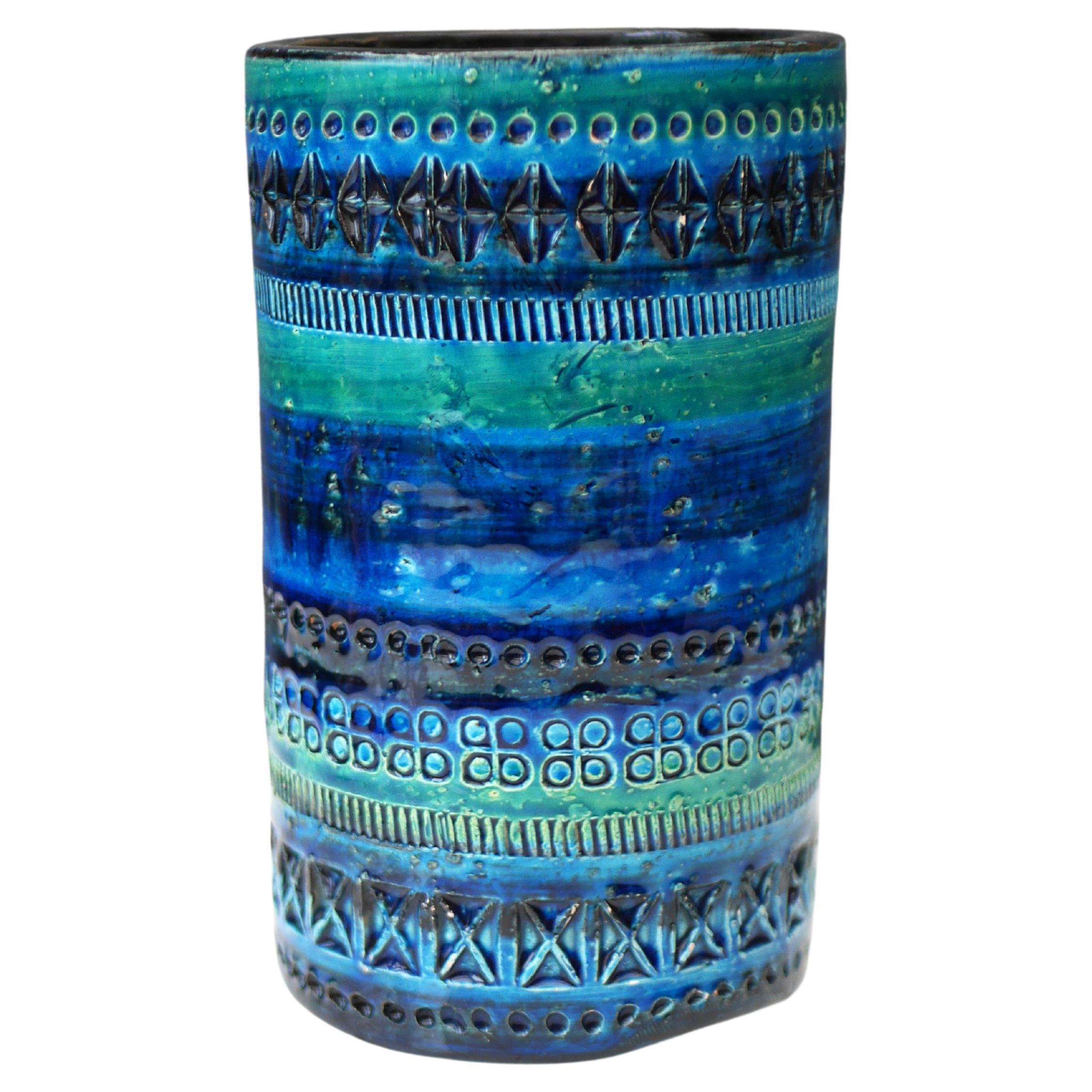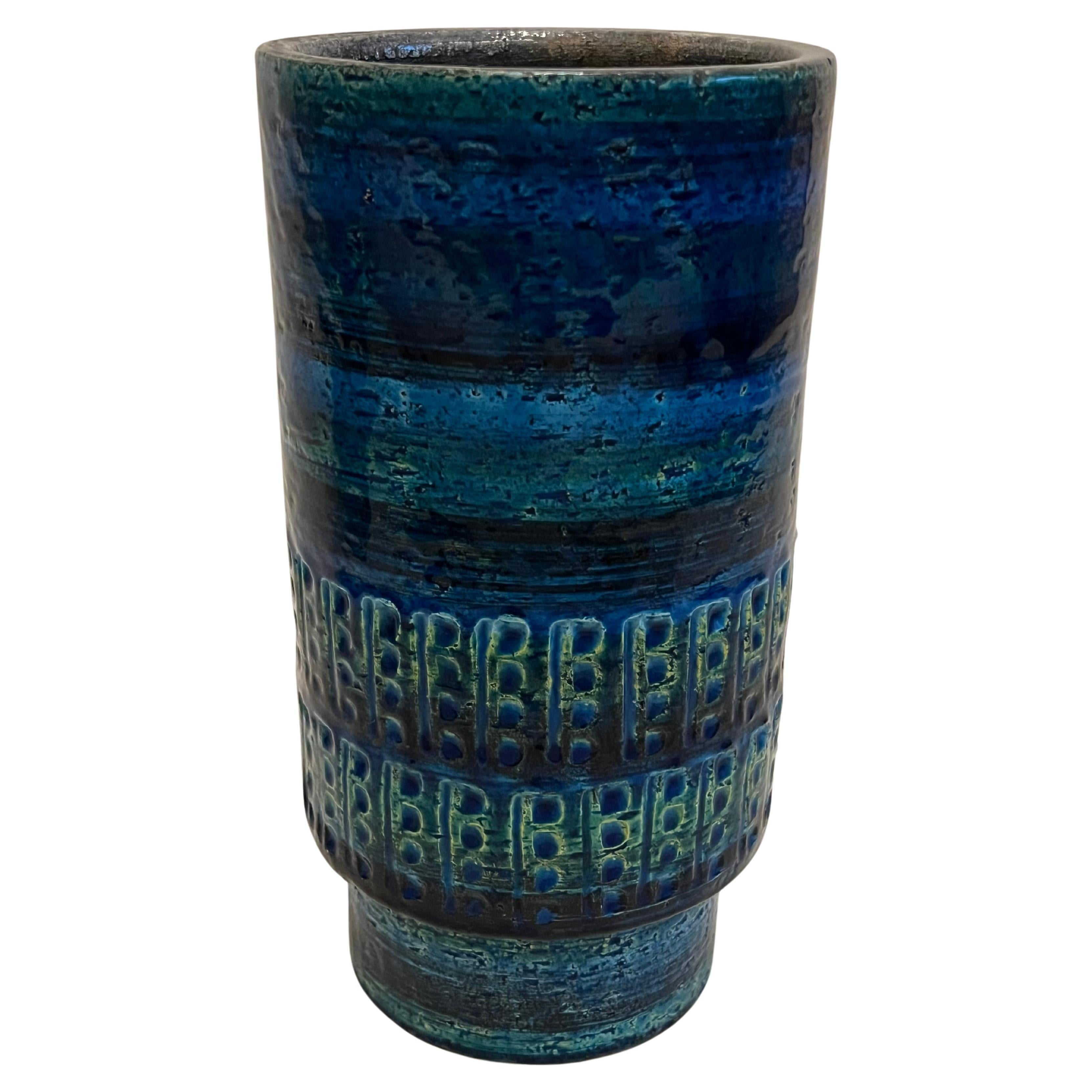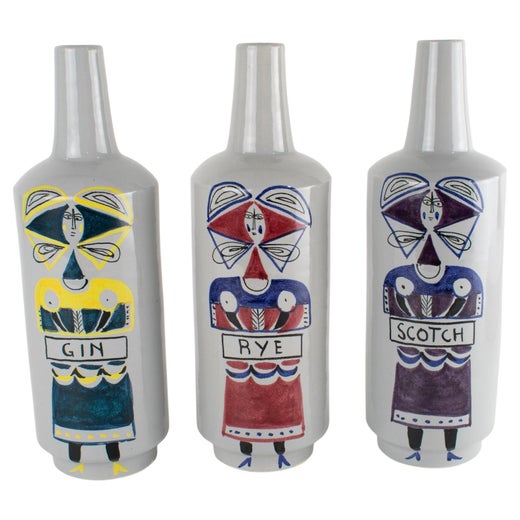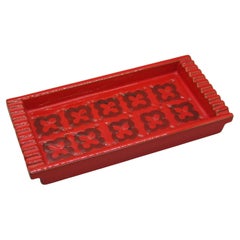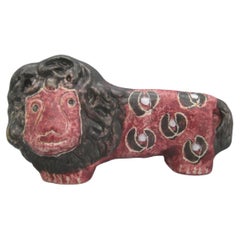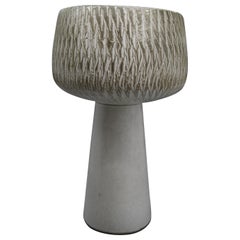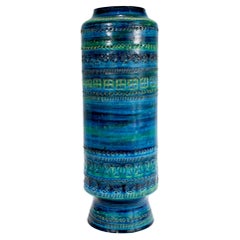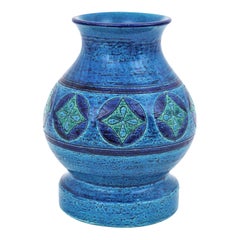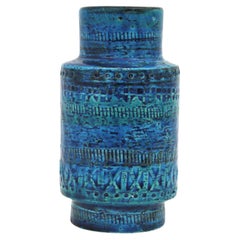1960's Aldo Londi Bitossi for Raymor Italy Abstract Ceramic Pottery Rimini Vase
About the Item
- Creator:
- Dimensions:Height: 4.75 in (12.07 cm)Diameter: 4.75 in (12.07 cm)
- Materials and Techniques:
- Place of Origin:
- Period:
- Date of Manufacture:1960s
- Condition:
- Seller Location:San Diego, CA
- Reference Number:1stDibs: LU887836164532
Bitossi
Like a Fellini movie, the ceramics of the famed Italian company Bitossi Ceramiche embody a creative spectrum that ranges from the playful and earthy to the high-minded and provocative. Based in Florence, Bitossi draws on craft traditions that date back to the 1500s. These find expression in Bitossi pottery that includes artisanal vintage vases and animal figures by the firm’s longtime art director Aldo Londi, as well as the colorful, totemic vessels designed by the high priest of postmodernism, Ettore Sottsass.
Bitossi was incorporated by Guido Bitossi in 1921, though the family began making art pottery in the mid-19th century. In the 1930s, Londi came aboard, bringing with him a mindset that respected time-honored craft, yet looked also to the future. On the one hand, Londi’s perspective fostered the making of Bitossi’s popular whimsical cats, owls, horses and other animal figures, hand-shaped and -carved and finished in a rich azure glaze known as “Rimini Blue.”
But with his other hand, Londi reached out to thoughtful, experimental designers such as Sottsass. After hiring Sottsass to design ceramics for his New York imports company, Raymor, American entrepreneur Irving Richards connected the Milanese design polymath to Londi, who introduced Sottsass to ceramics in the 1950s.
During that decade, some 20 years before he founded the Memphis postmodern design collective in Milan, Sottsass used the Bitossi kilns to create timeless works that manifest both primitive forms and modern geometries. In later decades, Bitossi would welcome new generations of designers, which have included such names as Ginevra Bocini and Karim Rashid.
While always looking forward, Bitossi is firm in their belief that mastery of craft is the first step towards beautiful design. As you will see from the works offered on these pages, that is a winning philosophy.
Find a collection of vintage Bitossi decorative objects, lighting and serveware on 1stDibs.
Raymor
Few had their finger on the pulse of American furniture like importer and distributor Raymor. Founder Irving Richards first had his eyes opened to the world of furniture while attending the 1928 Salon d’Automne art and design fair in Paris. He joined Lightolier two years later and developed its business relationships, including with designer Russel Wright.
Wright and Richards met in 1935 and Russel Wright, Inc. was formed in 1936. Its American Modern ceramic tableware, produced under the name Wright Accessories in 1938, was a notably lucrative collaboration. Following the early success of American Modern, Richards obtained the majority share of Wright Accessories and changed its name to Raymor Mfg Division Inc. in 1941.
By 1952, the exclusivity over American Modern had ended (the line was initially produced by Wright Associates and later manufactured by Steubenville for two decades). To keep up with American markets, Raymor worked with prominent designers such as George Nelson, Arthur Umanoff, Ray and Charles Eames, and Hans J. Wegner.
The company’s imports expanded to Denmark, which contributed to the rise of Scandinavian modern designs in the American market. Throughout the 1950s, Richards established relationships with factories in Scandinavia, Italy and Germany, as well as with the influential tastemaker and importer Charles Stendig.
The furniture company Simmons bought Raymor in 1963 and changed its name to Raymor Richards, Morgenthau Inc. in 1969. During that time, Raymor’s Omnibus range of Scandinavian-style wall units became widely popular, along with Italian glass and pottery like Bitossi ceramics designed by Aldo Londi and Bagni ceramics by Alvino Bagni.
Shifting styles coupled with rising competition, and the departure of Richards from the company, ended Raymor. By the late 1970s, Raymor faced a wave of international factories able to produce similar products of lesser quality for a lower cost. Buyers were eager to frequently change their interior styles, limiting the need for high-end, durable furniture, which Raymor had been importing.
On 1stDibs, find a collection of vintage Raymor ceramics, lamps, decorative objects and more.
- ShippingRetrieving quote...Shipping from: San Diego, CA
- Return Policy
More From This Seller
View AllMid-20th Century Italian Ashtrays
Ceramic
Mid-20th Century Italian Animal Sculptures
Pottery
Mid-20th Century Italian Wall-mounted Sculptures
Ceramic, Pottery
Mid-20th Century Japanese Vases
Pottery
Mid-20th Century American Vases
Ceramic, Pottery
Late 20th Century American Vases
Ceramic, Pottery
You May Also Like
Mid-20th Century Italian Mid-Century Modern Pottery
Pottery
Vintage 1960s Italian Mid-Century Modern Vases
Ceramic
Early 20th Century Italian Mid-Century Modern Vases
Ceramic
Mid-20th Century Italian Mid-Century Modern Vases
Ceramic, Terracotta, Pottery
Vintage 1960s Italian Mid-Century Modern Vases
Wicker, Art Glass
20th Century Italian Mid-Century Modern Vases
Pottery


